One of these key events is, without a doubt, the conquest of Istanbul in 1453. This event marked the end of one empire, the victory of another, and the beginning of a new era. If you want to fully appreciate the grandeur of Istanbul, the historical museum “Panorama 1453” should be on your list of must-visit places. A delegation consisting of representatives from the international research centers of Imam Bukhari, Imam Maturidi, and Imam Termizi, led by the director of the Center for Islamic Civilization of Uzbekistan and Chairman of WOSCU, visited the “Panorama 1453” museum. They familiarized themselves with the exhibits dedicated to the conquest of Istanbul by Sultan Mehmed the Conqueror of the Ottoman Empire, as well as the museum’s innovative technologies and 3D projections. The delegation was greeted by the museum’s director, Mehmet Akkaya.
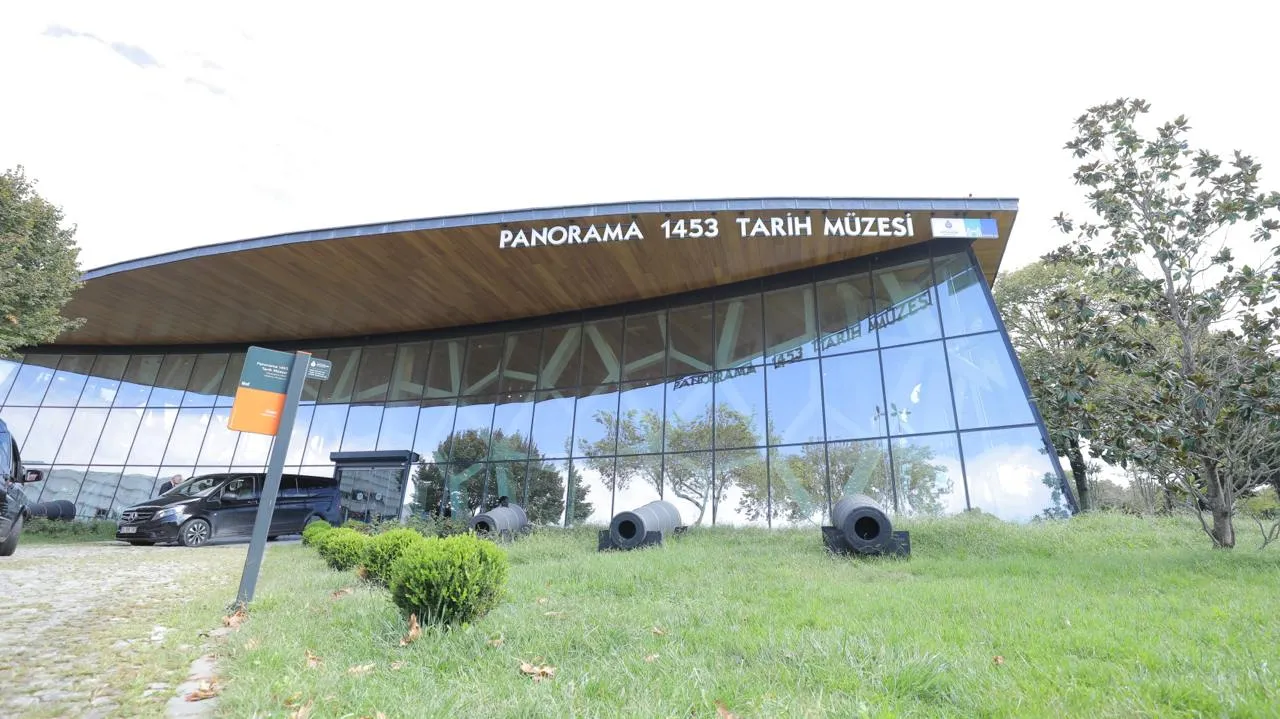
The idea and execution of the museum’s construction date back to 2003, while the building works started in 2005 and were completed in 2008. The museum opened its doors to visitors on January 31, 2009. Eight artists played a key role in creating the panorama. The author of the project’s concept is the artist and director Hosim Sitizen. Under his leadership, Ramazan Erkut, Yashar Zeynalov, Oksana Legkaya, Ahmet Kaya, Hasan H. Dincher, Atilla Tunka, and Murat Efe worked on the project. This team created the first panoramic museum in Turkey.
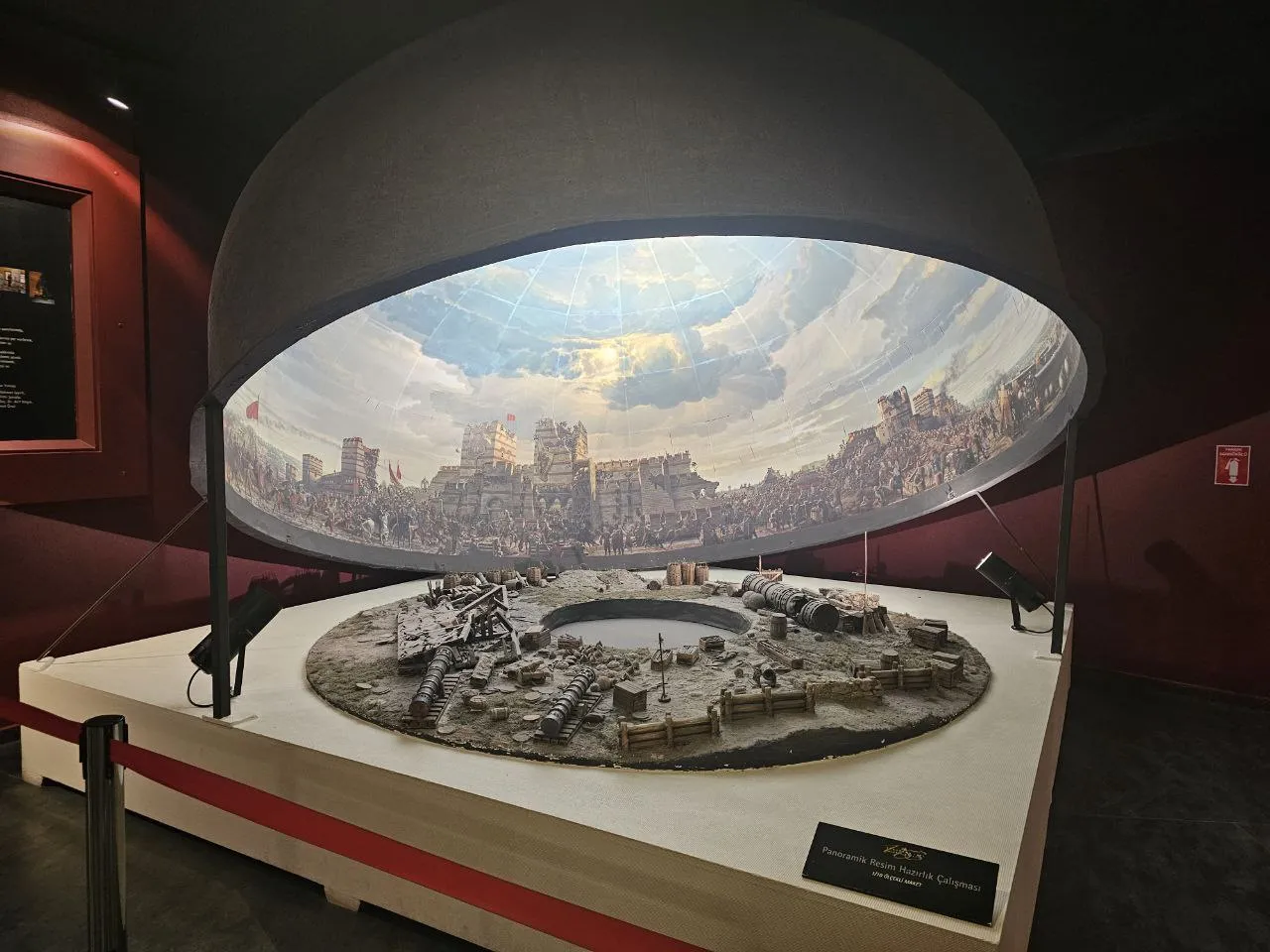
The museum’s main exhibit is a massive panoramic painting with a diameter of 38 meters, covering 360 degrees. However, the way it is presented creates an illusion of an even larger size, making it impossible to perceive its actual dimensions. Visitors are stunned by this sight in the first few seconds of their visit. To enhance the illusion, sound effects such as gunshots, soldiers' shouts, and battle music have been added.

Pigment paints, which will retain their original form for a hundred years, were used to create the museum's paintings. The massive panoramic painting in the museum's main hall contains a large number of details, and ensuring their harmonious interaction was no easy task. Even the destroyed parts of the city walls and their dimensions were depicted based on a report to Istanbul’s first governor, Hızır Bey, about the restoration of the city walls. The panoramic view covers an area of three square meters. Between the visitors and the images on the walls are cannons, bullets, explosives, swords, and barrels, all of which enhance the effect of the illusion. Of course, the panoramic image can be downloaded from the museum’s official website and viewed on your phone or computer. But keep in mind that the real experience can only be had by visiting the museum in person and immersing yourself in its atmosphere.
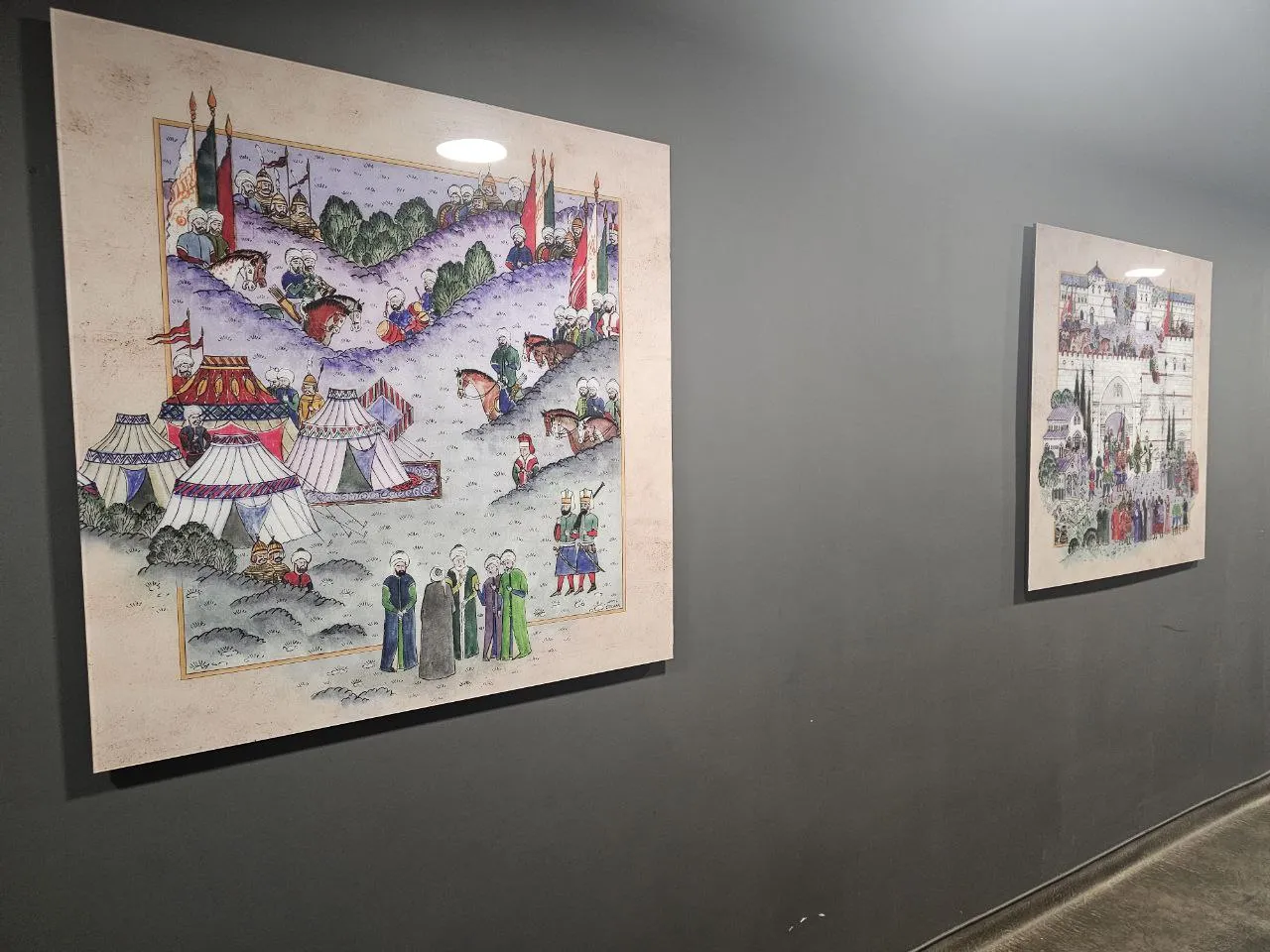
At the entrance to the museum, there is a display resembling a traditional museum. Here, you can see three-stage maps explaining the conquest of Istanbul.
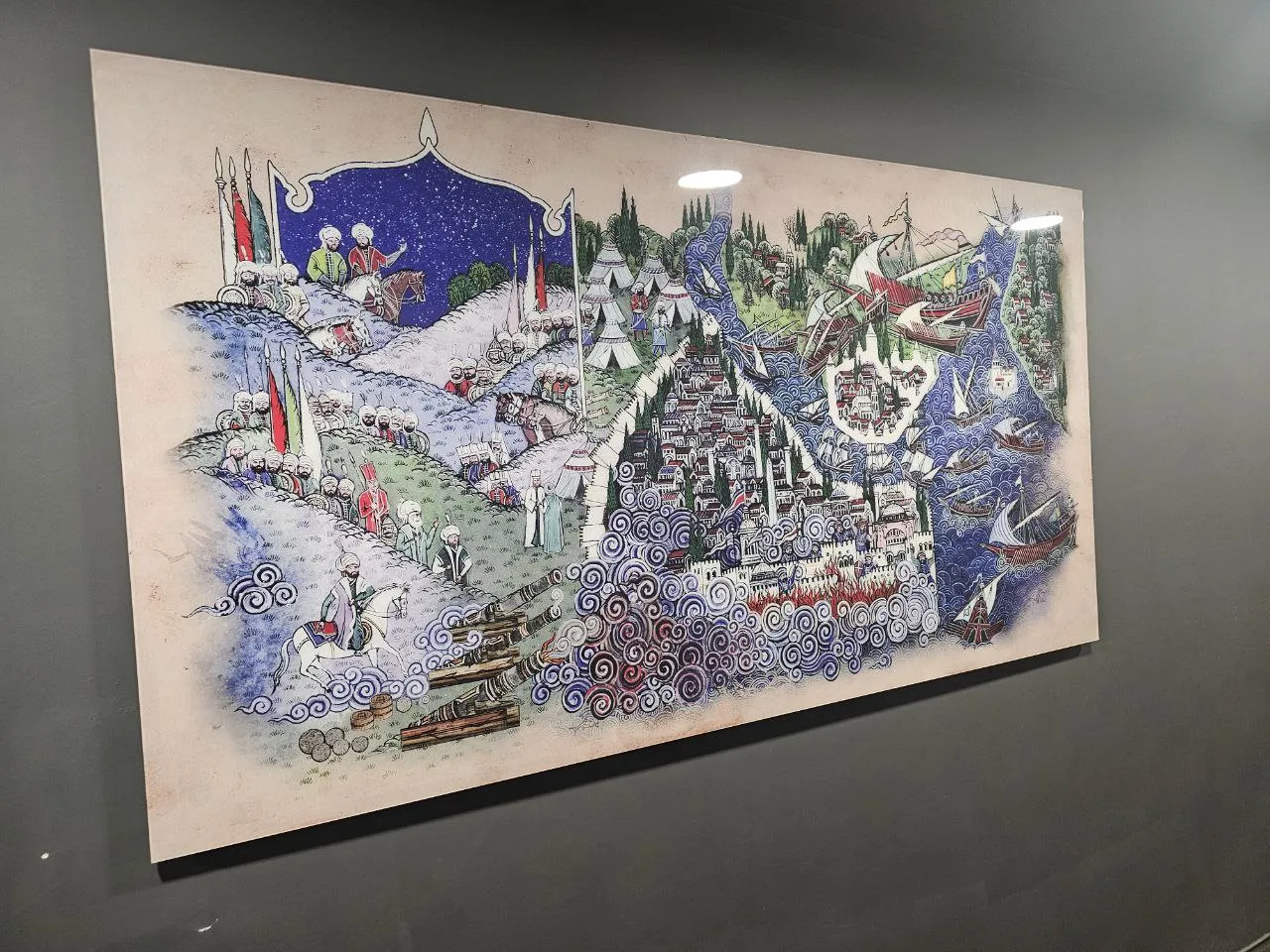
Additionally, outside the building, there is a helicopter simulator, which allows you to take a virtual tour of various places such as the Topkapi Palace, the ancient Greek cities of Pergamon and Ephesus, Aspendos, Cappadocia, Mount Nemrut, Uludag, the Bosphorus, Maiden’s Tower, Dolmabahçe Palace, Hagia Sophia, the Blue Mosque, and more.
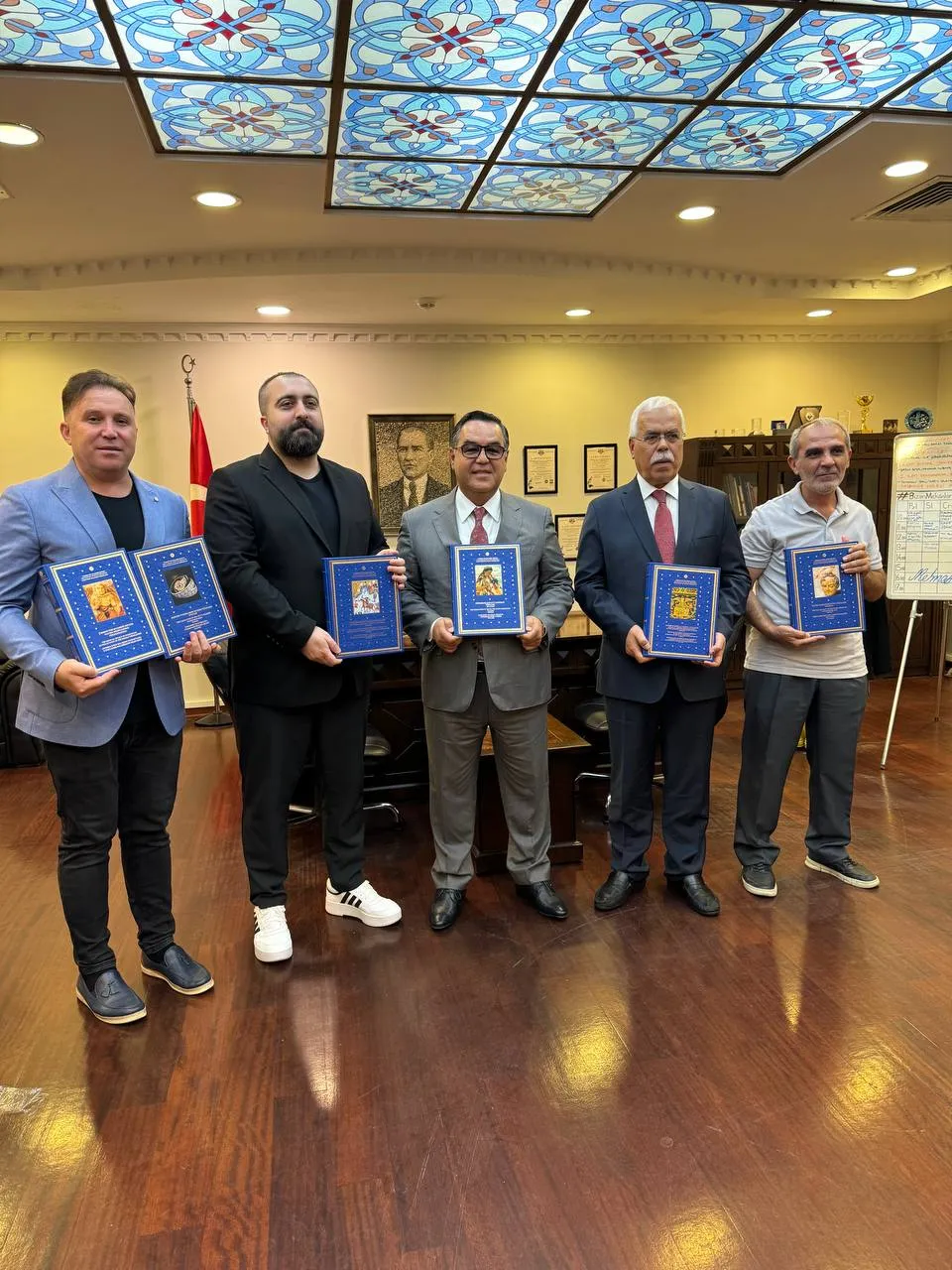
After visiting the museum, the delegation presented 10 volumes of the book-album "Architectural Epigraphy of Uzbekistan" to the library of the historical museum "Panorama 1453" on behalf of Uzbekistan. In turn, the hosts highly praised the reforms being carried out in Uzbekistan in the field of religion and education and expressed their gratitude for the gifted books. There was also a discussion about possible cooperation between the "Panorama 1453" museum and the Center for Islamic Civilization of Uzbekistan. In particular, ideas were exchanged about creating an innovative museum, using new technologies and methods to attract visitors. It was emphasized that such cooperation could be achieved through joint projects, exhibitions, educational programs, and the exchange of experience with experts in the field of museology.

"All our joint projects with Uzbekistan have led to a record increase in the number of visitors to Turkey, and we are very pleased with this. In recent years, Uzbekistan’s focus on culture, art, and sports has also caught our attention. We are following Uzbekistan’s achievements in areas such as culture, science, sports, and civilization with great interest. We also congratulate your athletes on their Olympic medals. I must say that we always watch with keen interest," said Mehmet Akkaya, who has been the museum’s director for five years. "As for the museum, we thought for a long time about how to enrich it. We had the story of Sultan Mehmed the Conqueror as a central concept. We worked on the museum's concept and reached agreements, as this story was extremely important to us. Then we decided to create an interactive museum. Later, the necessary financial steps were taken, and we achieved the museum's current form. At present, we have the largest exhibition in the world. We operate on an area of 2,350 square meters and provide services to visitors seven days a week. Imagine a screen 140 by 20 meters. Can you imagine how difficult it was to create it in 360 degrees? We confidently pursued our goal and achieved it. We were able to convey to visitors who Sultan Mehmed the Conqueror was. When visitors enter the panoramic zone of the museum, they can experience the dream of Sultan Mehmed the Conqueror. They are greeted by the morning of May 29, 1453. This is a panoramic field of communication. When the lights go out, they witness the true dream of Sultan Mehmed the Conqueror. His dream comes true here, and when the lights turn back on, the visitor realizes the reality. The medallion of Sultan Mehmed the Conqueror, created by a master in 1481, was also brought to Turkey. It has been kept here for six months. This is a medallion that has been dreamed of for many years."


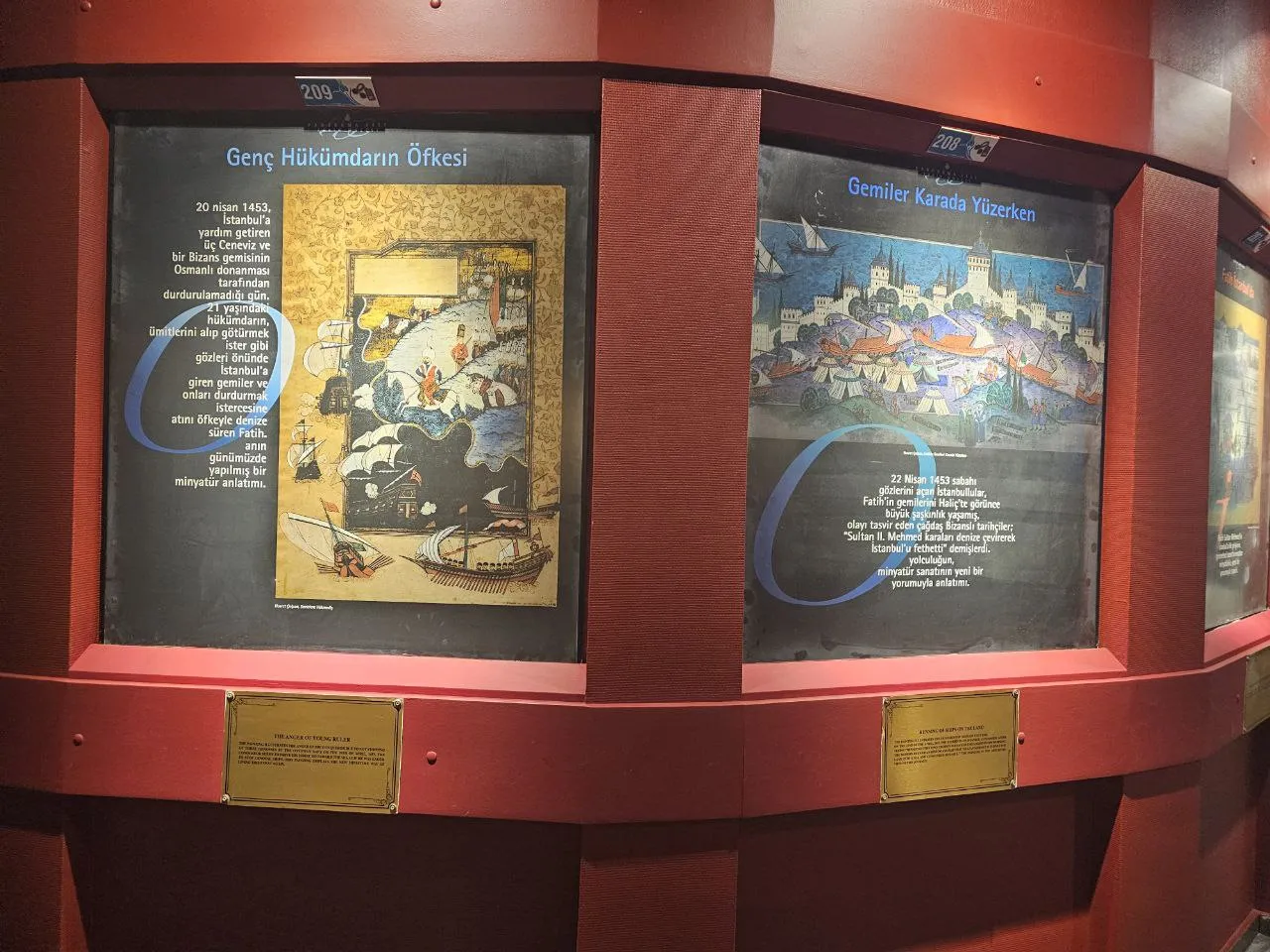

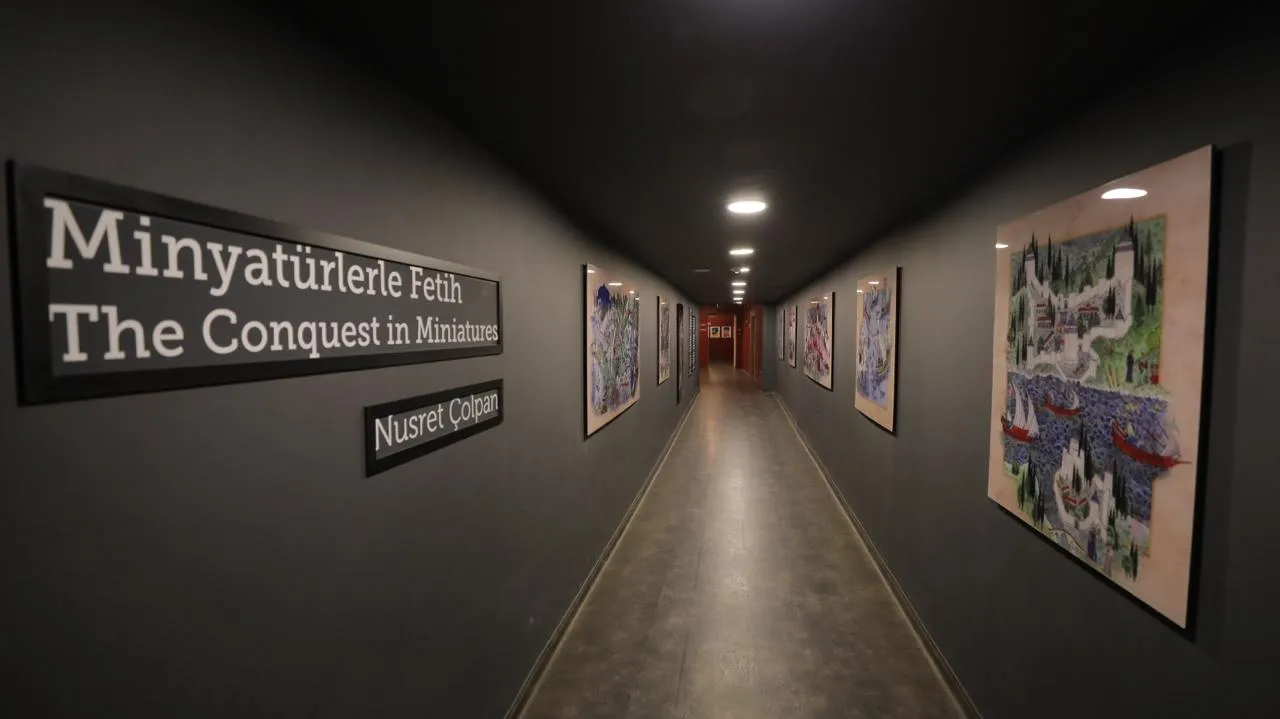

During the meeting, negotiations were also held with the museum’s director on cooperation, and the next stages of mutual collaboration were discussed. An agreement was reached to implement joint projects as part of this cooperation.
